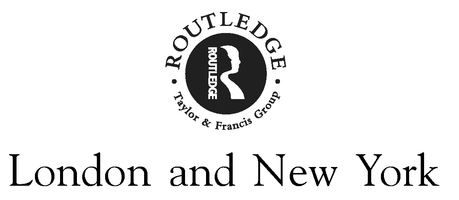Gabriel Cooney - Landscapes of Neolithic Ireland
Here you can read online Gabriel Cooney - Landscapes of Neolithic Ireland full text of the book (entire story) in english for free. Download pdf and epub, get meaning, cover and reviews about this ebook. year: 2012, publisher: Routledge, genre: Science fiction. Description of the work, (preface) as well as reviews are available. Best literature library LitArk.com created for fans of good reading and offers a wide selection of genres:
Romance novel
Science fiction
Adventure
Detective
Science
History
Home and family
Prose
Art
Politics
Computer
Non-fiction
Religion
Business
Children
Humor
Choose a favorite category and find really read worthwhile books. Enjoy immersion in the world of imagination, feel the emotions of the characters or learn something new for yourself, make an fascinating discovery.
- Book:Landscapes of Neolithic Ireland
- Author:
- Publisher:Routledge
- Genre:
- Year:2012
- Rating:3 / 5
- Favourites:Add to favourites
- Your mark:
- 60
- 1
- 2
- 3
- 4
- 5
Landscapes of Neolithic Ireland: summary, description and annotation
We offer to read an annotation, description, summary or preface (depends on what the author of the book "Landscapes of Neolithic Ireland" wrote himself). If you haven't found the necessary information about the book — write in the comments, we will try to find it.
Landscapes of Neolithic Ireland — read online for free the complete book (whole text) full work
Below is the text of the book, divided by pages. System saving the place of the last page read, allows you to conveniently read the book "Landscapes of Neolithic Ireland" online for free, without having to search again every time where you left off. Put a bookmark, and you can go to the page where you finished reading at any time.
Font size:
Interval:
Bookmark:

The Neolithic period in Ireland is well-known for its wealth of archaeological monuments, such as Newgrange. Landscapes of Neolithic Ireland is the first volume to be devoted solely to the Irish Neolithic, using an innovative landscape and anthropological approach to provide significant new insights on the period.
Gabriel Cooney argues that people in the Irish Neolithic socialised landscapes in complex ways, in which the domestic and the ceremonial aspects of life were interlinked. The book begins by looking at the character of Neolithic landscapes, and the use of space inside and outside houses. The importance of the dead and the ancestors is illuminated by discussing the history of several individual sites, and the creation of the spectacular monumental landscapes characteristic of the Irish Neolithic is explored. Pottery and stone axeheads are the foci of a discussion of the ways in which people used material culture. Finally, the issue of local, regional and wider identities is used to place Neolithic Ireland in a wider west European context.
Thought-provoking, scholarly and imaginative, this volume is written from the perspective that archaeology is about understanding people an how they lived in the past. Landscapes of Neolithic Ireland will be essential reading for everyone studying the Neolithic in Europe.
Gabriel Cooney is a Professor in the Department of Archaeology, University College, Dublin.
Gabriel Cooney

First published 2000
by Routledge
2 Park Square, Milton Park, Abingdon, Oxon, OX14 4RN
Simultaneously published in the USA and Canada
by Routledge
270 Madison Ave, New York NY 10016
Routledge is an imprint of the Taylor & Francis Group
Transferred to Digital Printing 2006
2000 Gabriel Cooney
Typeset in Goudy by Florence Production Ltd, Stoodleigh, Devon
All rights reserved. No part of this book may be reprinted or reproduced or utilised in any form or by any electronic, mechanical, or other means, now known or hereafter invented, including photocopying and recording, or in any information storage or retrieval system, without permission in writing from the publishers.
British Library Cataloguing in Publication Data
A catalogue record for this book is available from the British Library
Library of Congress Cataloging in Publication Data
A catalogue record for this book has been requested
Cooney, Gabriel.
Landscapes of Neolithic Ireland / Gabriel Cooney.
p. cm.
Includes bibliographical references and index.
ISBN 0415169763. ISBN 0415169771
1. Neolithic periodIreland.
2. Human geographyIrelandHistory.
3. LandscapeIrelandHistory. 4. IrelandAntiquities.
I. Title.
GN806.5.C684 1999
936.15dc21
ISBN 0-415-16976-3 (hbk)
ISBN 0-415-16977-1 (pbk)
FOR MER, EOIN, EMMA AND ROSANNA
| Figures | |
|---|---|
| (A) Lengths of stone axeheads, (B) Contexts of stone axeheads | |
| (A)Biogeographical regions, (B)Distribution of various monument types, (C)Relative distribution of most abundant lithological group of axeheads, by county | |
| Plates |
I am very grateful to a number of colleagues who read various drafts of the manuscript. Alison Sheridan and Alastair Whittle read most of the text in detail. Richard Bradley, Seamas Caulfield, Eoin Grogan, Andrew Jones, Finola OCarroll and Aidan OSullivan also provided valuable discussion and comments for which I am very grateful. I would also like to thank Gordon Barclay, Gretta Byrne, Tom Condit, Shannon Fraser, Barrie Hartwell, Carleton Jones, Ann Lynch, Conleth Manning, Mick Monk, Andrew Powell and Paul Walsh for their help and discussion of specific points. I am very grateful to Gretta Byrne, Carleton Jones and Andrew Powell for access to largely unpublished data. I am also grateful to my colleagues in the Irish Stone Axe Project, Stephen Mandal and Emmet Byrnes for their help, support and contributions to the text and illustrations. The input of all the above has greatly improved the text, the faults it still has are mine, inevitably there are still lots of ideas and issues that we will debate!
In a book like this the illustrations play a major role and I am delighted and grateful to acknowledge the hard work and inspired input of Conor Brady who created most of the line drawings, in some cases from very fluffy originals! The pottery drawings are by Niamh OBroin and greatly enhance the text. I would also like to thank Dave Jennings for all his help with the illustrations.
Seamas Caulfield and Barrie Hartwell very kindly provided photographs. Clare Foley assisted in obtaining the Millin Bay photograph and I would like to thank Tony Roche, John Scarry and Con Brogan of the Photographic Section, National Monuments Service, Dchas for their help with regard to photographs, both on this occasion and in the past! is reproduced with the permission of the Cambridge University Committee for Aerial Photography.
The text contains some material which was published in an earlier form and I would like to thank Wordwell for permission to use material from .
I am pleased to acknowledge the support of my colleagues in the Department of Archaeology, University College Dublin and in particular Barry Rafterys interest and whole-hearted encouragement and support. The Faculties of Arts and Celtic Studies in University College Dublin have supported my research in various ways. The book was completed while I was on sabbatical leave as a Presidents Research Fellow. This fellowship was awarded by University College Dublin and I would like to formally acknowledge my gratitude and honour to be in receipt of this fellowship.
At Routledge Vicki Peters, Jody Ball, Nadia Jacobson, before her departure, and Catherine Bousfield were ever helpful and patient and made the production process a very smooth and calm operation, many thanks.
Of course writing and archaeology takes up a lot of time and I am especially grateful to my wife, Mer and our children, Eoin, Emma and Rosanna for their cheerful support and forebearance. The book is dedicated to them.
Looking at the Irish Neolithic A Landscape Perspective
As an archaeologist the period I have always been particularly interested in is what is known as the Neolithic. For the archaeologist the word Neolithic conjures up a range of varied associations. In calendrical time terms it refers to the period in Ireland between 4000 and 2500 BC, but extending over 2,000 years earlier in parts of Europe. It is when we see the beginnings of agriculture, but also the continuity of foraging. This was when the first major human intervention into the then densely wooded Irish landscape was made. The archaeological record indicates a complex set of religious beliefs, including the construction of a range of ceremonial monuments. These monuments occur alongside evidence of the dominance of routine lives. It would seem that people had a great concern with the dead and the ancestors, matched with and perhaps reflecting the lived reality that most people could not expect to live past their early 30s. These are just a few of the images that the word Neolithic conveys to archaeologists working with the evidence from this period. Indeed the definition of what the term means is still a matter of considerable debate.
Font size:
Interval:
Bookmark:
Similar books «Landscapes of Neolithic Ireland»
Look at similar books to Landscapes of Neolithic Ireland. We have selected literature similar in name and meaning in the hope of providing readers with more options to find new, interesting, not yet read works.
Discussion, reviews of the book Landscapes of Neolithic Ireland and just readers' own opinions. Leave your comments, write what you think about the work, its meaning or the main characters. Specify what exactly you liked and what you didn't like, and why you think so.












